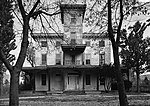Valley Forge National Historical Park

Valley Forge National Historical Park is the site of the third winter encampment of the Continental Army during the American Revolutionary War from December 19, 1777 to June 19, 1778. The National Park Service preserves the site and interprets the history of the Valley Forge encampment. The park contains historical buildings, recreated encampment structures, memorials, museums, and recreation facilities. The park encompasses 3,500 acres (1,400 ha) and is visited by over 1.2 million people each year. Visitors can see restored historic structures, reconstructed structures such as the iconic log huts, and monuments erected by the states from which the Continental soldiers came. Visitor facilities include a visitor center and museum featuring original artifacts and providing an introduction to the American Revolution and the Valley Forge encampment. Ranger programs, tours (walking and trolley), and activities are available seasonally. The park also provides 26 miles (42 km) of hiking and biking trails, which are connected to a regional trails system. Wildlife watching, fishing, and boating on the nearby Schuylkill River also are popular.
Excerpt from the Wikipedia article Valley Forge National Historical Park (License: CC BY-SA 3.0, Authors, Images).Valley Forge National Historical Park
County Line Road, Upper Merion Township
Geographical coordinates (GPS) Address Nearby Places Show on map
Geographical coordinates (GPS)
| Latitude | Longitude |
|---|---|
| N 40.096944444444 ° | E -75.438888888889 ° |
Address
County Line Road
County Line Road
19481 Upper Merion Township
Pennsylvania, United States
Open on Google Maps








